IN BRIEF
What Artist’s garden, with each plant chosen for its qualities as a cut flower. Where Connecticut, USA. Size One acre within a six-acre site. Soil Good, friable loam. Climate Hot and muggy in summer; snowbound in winter. Hardiness zone USDA 6a.
Location
Weston, Connecticut has a certain glamour, having long attracted artists, actors and writers who began to come here in the 1930s from New York City. An hour’s train journey plus a ten-minute drive into pretty, wooded countryside could not make a stronger contrast in late summer between sweltering urban life and cool, breezy home, possibly in a former farmhouse on several acres. Although Weston has been discovered by developers, it is still characterised to a large extent by open spaces and by properties that are visually unenclosed, with smaller gardens within a larger yard or property. These are generally fenced off from herbivores if residents hope to cultivate anything more than native plants.
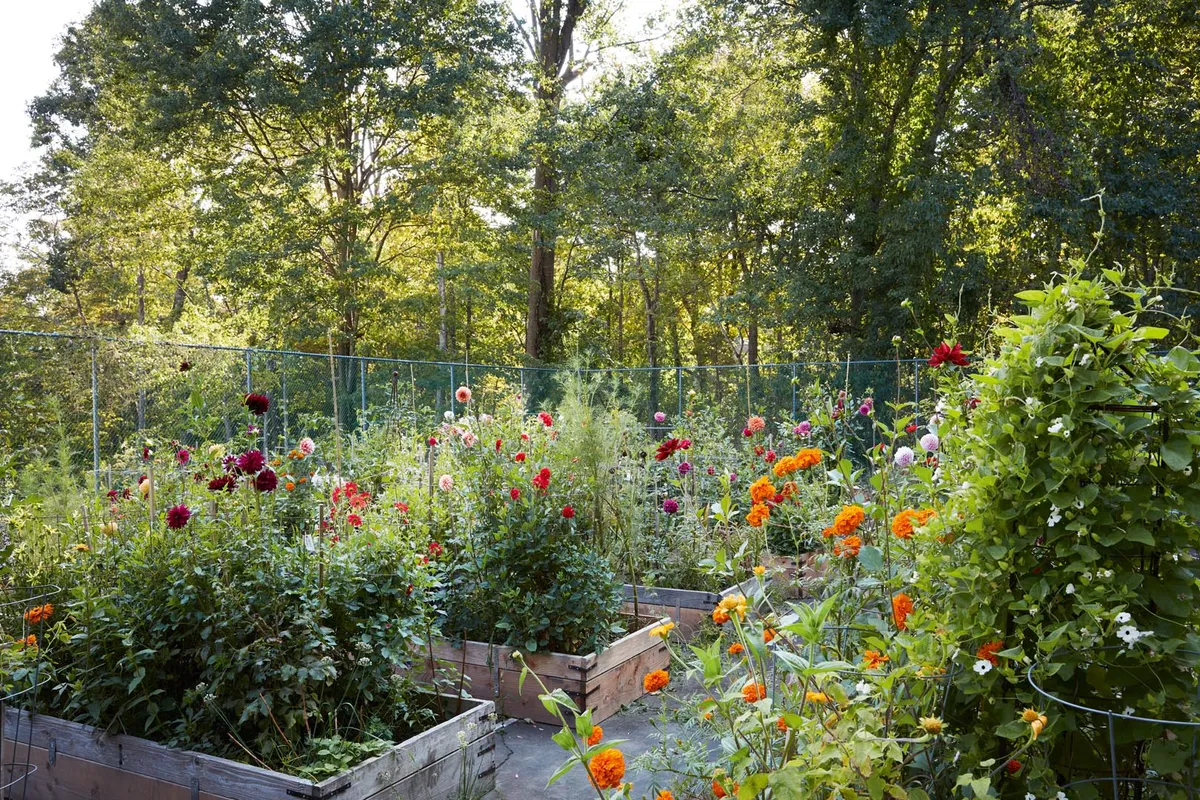
When Frances Palmer moved with her husband and children to their Weston house 27 years ago, she was already a potter, documenting her work by taking photographs of her vessels, filled with flowers. Frances had relied on the flower markets in New York but now she had the space to grow what she wanted, and very soon she had a dahlia encounter, which can be reasonably described as love at first sight. It was in the dahlia garden at San Francisco’s Golden Gate Park, and Frances wasted no time in asking the gardeners all about them, proceeding immediately to an annual dahlia show nearby, and sourcing some of the best growers – who have been supplying her with tubers ever since.
The 'walled garden'
Frances now has more than 500 dahlias growing in a round, fenced garden that she urged her husband Wally to make at his earliest convenience, and in a tennis court garden – which he in turn suggested to her when she started to run out of growing space. “I thought it was kind of hilarious,” she says, recalling that they’d had the old court newly fenced, in the vain hope that someone in the family might use it for its intended purpose. Now, it is a kind of aerated walled garden, with 30 raised beds and a row of beehives at one end. The chain-link perimeter is efficient at protecting plants from deer, and honey from bears – it is beautifully utilitarian, while ageing gracefully. “There are lots of cracks,” says Frances. “I let anything come up that wants to seed in there. I don’t believe in weeds.”
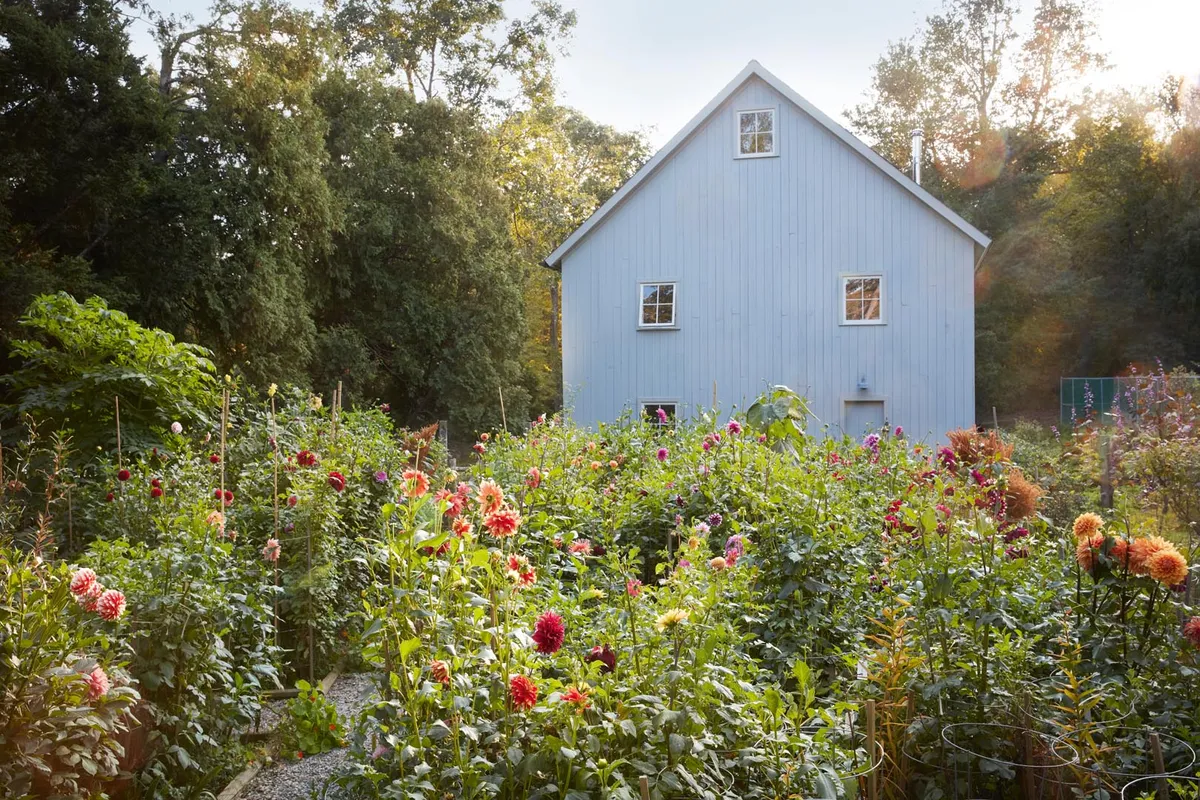
In order to encourage bees, Frances has been growing more pollinator plants and natives but mainly, her focus is on growing flowers that will give scale and context to her work as a highly sought-after ceramicist. “My choices are limited to what I can cut and put in a vase,” she says. It is not a bad limitation: flower production begins with the first bulbs of spring, continuing with bearded irises, peonies and roses, as well as annuals such as zinnias, poppies and sunflowers. “It’s all happening,” she laughs, “it’s crazy out there.”
Frances is as productive as her cutting gardens, starting the morning outdoors at 5.30am and working in increments throughout the day. “Two or three times a day I go out there and just stand. I love the beauty,” she says. “The progression, the whole sequence is fascinating to me.” With dahlias in particular, she admires the variety of shape and colour on a single plant, and the way the flowers age and transform as the season goes on. “I select a range of bloom sizes to suit every vase shape,” she explains. “Most often I want to show off a single dahlia, to marvel at the geometry – but a whole bowlful is stupendous.”

Frances started off collecting classic dahlias, such as ‘Zorro’, ‘Spartacus’ and ‘Clyde’s Choice’, as well as heirloom dahlias, buying tubers with provenance from places such as Meadowburn Farm in New Jersey, an historic garden designed between 1881 and 1920 by author Helena Rutherfurd Ely, a founding member of the Garden Club of America. On this foundation, Frances buys new cultivars every year. She is a true connoisseur, with a master’s degree in art history, and she has taught classes on all aspects of dahlias at the New York Botanical Garden. “Her curiosity knows no bounds,” says photographer Ngoc Minh Ngo, who has known Frances for more than 20 years, “and she also has an incredible work ethic.”

In both gardening and ceramics, Frances is intrigued by the idea of a creative process in which she is not in complete control of the outcome. “When things don’t go according to plan, that’s not a failure,” she says. “You need to pivot and come up with another strategy.” Sowing a seed or throwing a pot is the beginning of a journey that is driven more by the nature of the materials than by the person: “I see them as very intertwined: in the end, when I have a flower that I put into a vessel, we have worked on this together.”
14 Key Plants
1
Dahlia ‘Honka’

Single orchid (or star) dahlia, one of the classics that Frances loves. A central disc is ringed with single, incurved florets of lemon-yellow.
Flowerhead width 10cm, H 1m. AGM*. RHS H3†.
2
Dahlia ‘Myrtle’s Brandy’
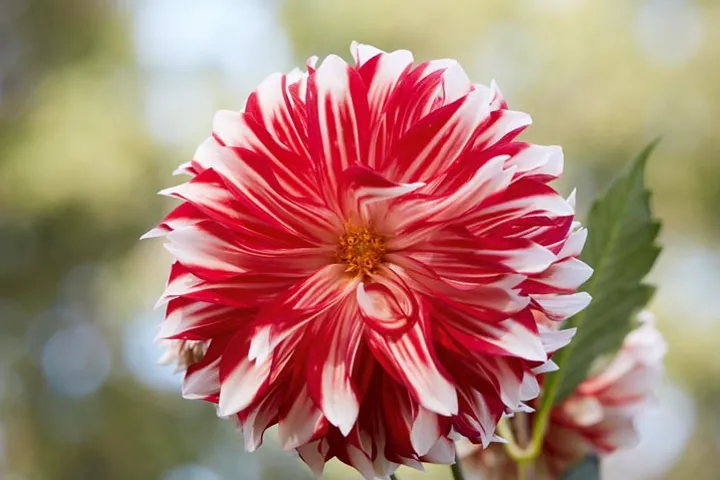
Classed as small and Formal Decorative in the USA (double flowers, with broad, flat petals that are bluntly pointed and evenly arranged).
W 10-15cm, H 1-1.5m. RHS H3.
3
Dahlia ‘Helena Rutherfurd Ely’
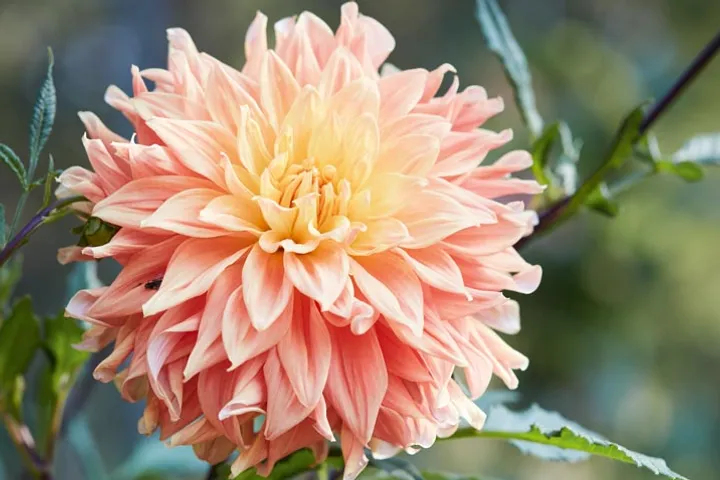
Heirloom dahlia from Meadowburn Farm in New Jersey, passed down since theturn of the 20th century. Informal Decorative.
W 20-25cm, H 1.2m. RHS H3.
4
Dahlia ‘Deuil du Roi Albert’
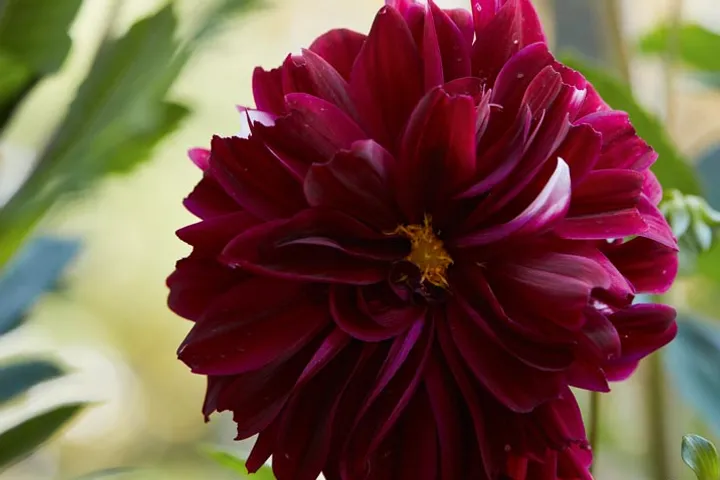
Rare, European cultivar from 1936. This one differs from the listed, two-toned flower of purple and white: “It morphs beautifully,” says Frances.
W 10cm, H 90cm-1.2m. RHS H3.
5
Dahlia ‘Old Gold’
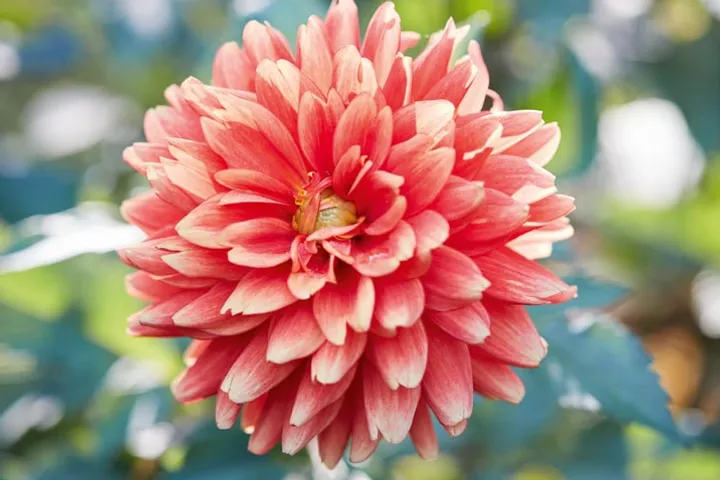
Rare, heirloom dahlia from 1947. Petals are orange, intensifying in hue towards the centre; colours may change slightly over time. Small, Formal Decorative.
W 10-15cm, H 1.5m. RHS H3.
6
Dahlia ‘Zorro’

Classic dahlia, intensely dark red, which doesn’t fade in the sun. Informal Decorative with petals that are slightly rolled at the tips, in an irregular arrangement.
W 25cm, H 1.2m. AGM. RHS H3.
7
Dahlia ‘Meadowburn Clara Helen’
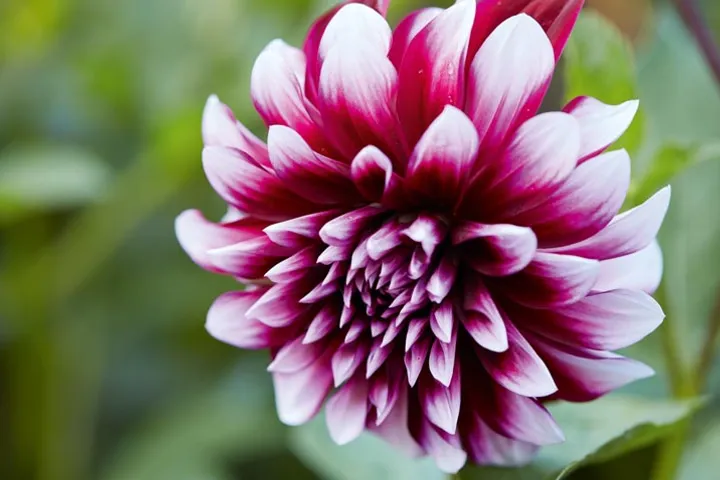
Heirloom dahlia from Meadowburn Farm, the former home of influential American gardening figure Helena Rutherfurd Ely. Bi-colour magenta and white.
W 10-15cm, H 1.5m. RHS H3.
8
Dahlia ‘Papageno’
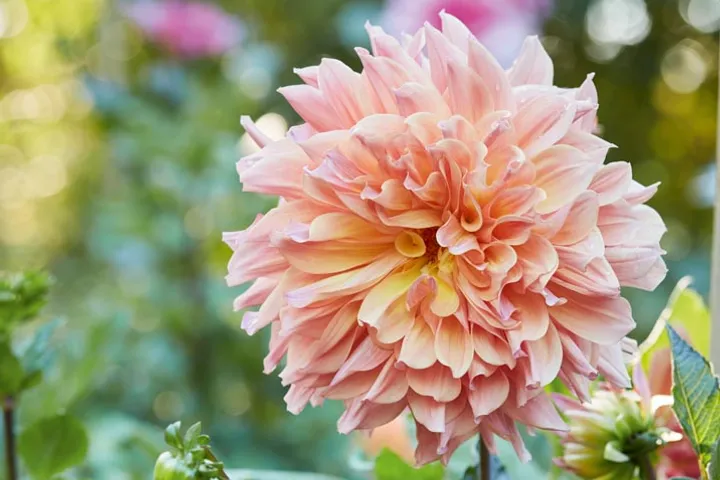
Introduced in 1972. Formal Decorative dinnerplate dahlia with peach-to-yellow, slightly twisted petals. Large and reliable with exceptional foliage.
W 25cm, H 1.2m. RHS H3.
9
Dahlia ‘Bodacious’

Giant, flame-like blooms of orange-red with yellow tips and undersides. Informal Decorative, 21st-century dinnerplate dahlia with twisted petals. Spectacular.
W 28cm, H 1.5m. RHS H3.
10
Dahlia ‘Otto’s Thrill’

Clear-pink, dinnerplate dahlia on strong stems, with fresh-green foliage. Informal Decorative, fully double blooms; 1956 heirloom cultivar.
W 25cm, H 1.1m. AGM. RHS H3.
11
Dahlia ‘Lady Darlene’

Dinnerplate dahlia with fully double, involute petals. This one is the old type of Lady Darlene, no longer available to buy. Frances suggests ‘Bracken Sarah’ for similar colour.
12
Single-flowered early Dahlia coccinea hybrid (unnamed)
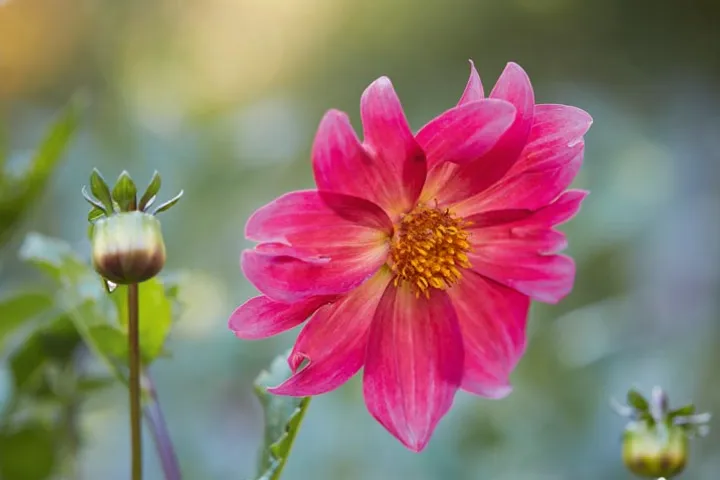
Can be grown from seed; these descendants from specimens collected in Mexico in the 16th century will develop tubers in their first season.
13
Dahlia ‘Lavender Perfection’
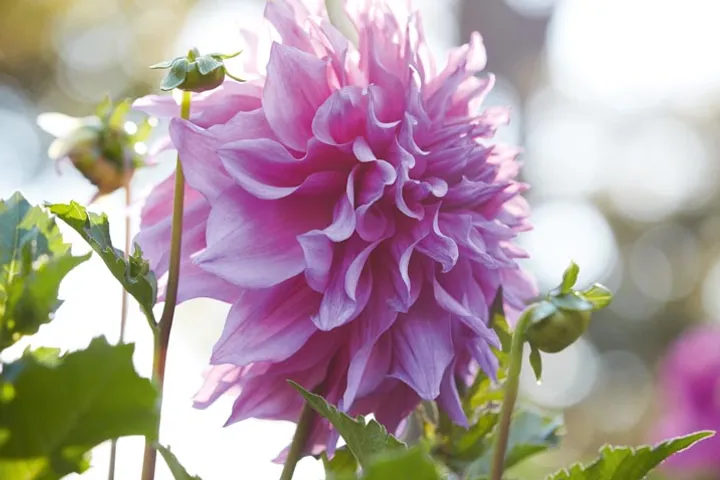
Dinnerplate dahlia from Kiev with two-toned, fully double flowers. Formal Decorative heirloom, introduced in 1951.
W 25cm, H 1-1.5m. RHS H3.
USEFUL INFORMATION
Find out more about Frances’s work at francespalmerpottery.com. Follow Frances on Instagram @francespalmer